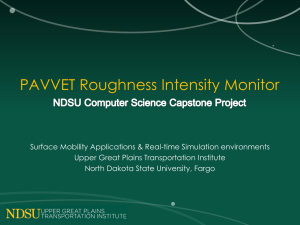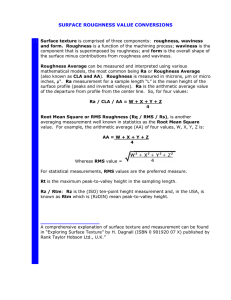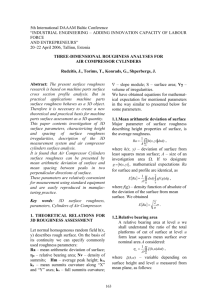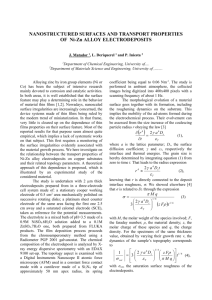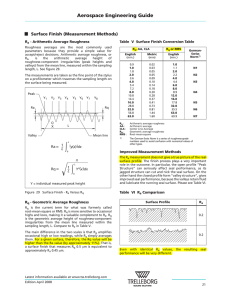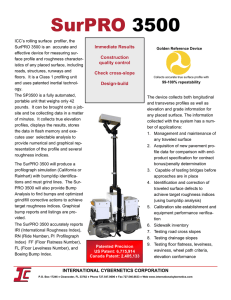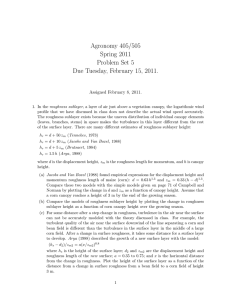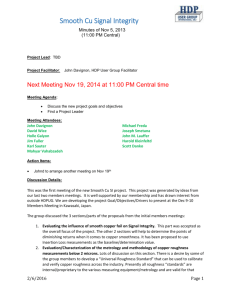HW1
advertisement
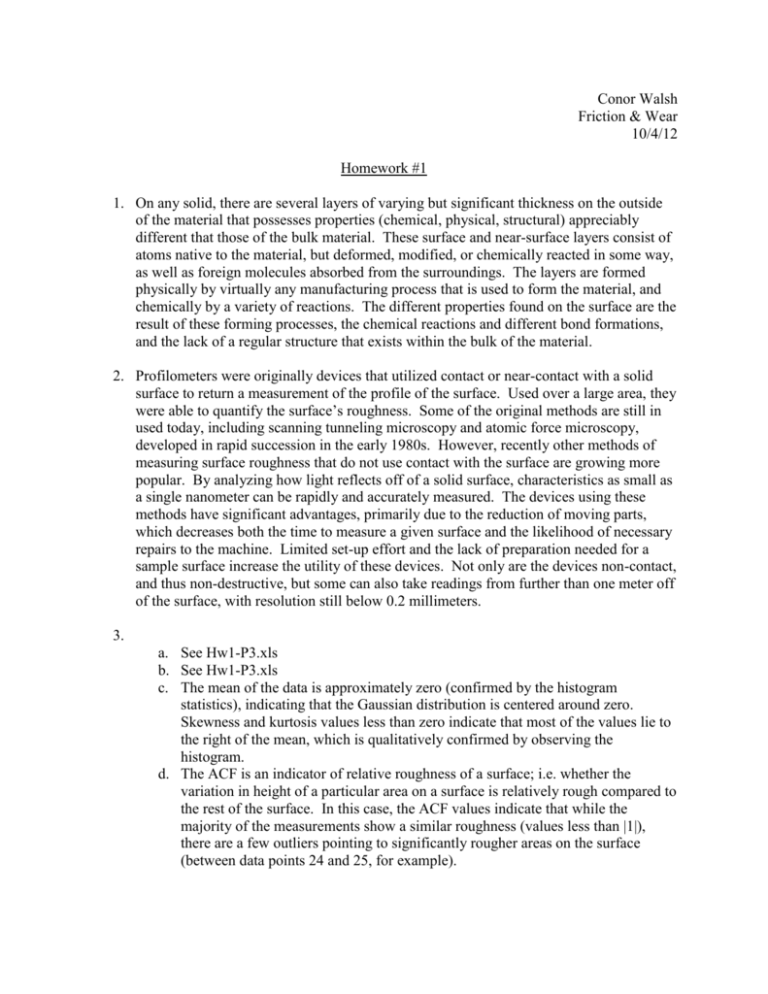
Conor Walsh Friction & Wear 10/4/12 Homework #1 1. On any solid, there are several layers of varying but significant thickness on the outside of the material that possesses properties (chemical, physical, structural) appreciably different that those of the bulk material. These surface and near-surface layers consist of atoms native to the material, but deformed, modified, or chemically reacted in some way, as well as foreign molecules absorbed from the surroundings. The layers are formed physically by virtually any manufacturing process that is used to form the material, and chemically by a variety of reactions. The different properties found on the surface are the result of these forming processes, the chemical reactions and different bond formations, and the lack of a regular structure that exists within the bulk of the material. 2. Profilometers were originally devices that utilized contact or near-contact with a solid surface to return a measurement of the profile of the surface. Used over a large area, they were able to quantify the surface’s roughness. Some of the original methods are still in used today, including scanning tunneling microscopy and atomic force microscopy, developed in rapid succession in the early 1980s. However, recently other methods of measuring surface roughness that do not use contact with the surface are growing more popular. By analyzing how light reflects off of a solid surface, characteristics as small as a single nanometer can be rapidly and accurately measured. The devices using these methods have significant advantages, primarily due to the reduction of moving parts, which decreases both the time to measure a given surface and the likelihood of necessary repairs to the machine. Limited set-up effort and the lack of preparation needed for a sample surface increase the utility of these devices. Not only are the devices non-contact, and thus non-destructive, but some can also take readings from further than one meter off of the surface, with resolution still below 0.2 millimeters. 3. a. See Hw1-P3.xls b. See Hw1-P3.xls c. The mean of the data is approximately zero (confirmed by the histogram statistics), indicating that the Gaussian distribution is centered around zero. Skewness and kurtosis values less than zero indicate that most of the values lie to the right of the mean, which is qualitatively confirmed by observing the histogram. d. The ACF is an indicator of relative roughness of a surface; i.e. whether the variation in height of a particular area on a surface is relatively rough compared to the rest of the surface. In this case, the ACF values indicate that while the majority of the measurements show a similar roughness (values less than |1|), there are a few outliers pointing to significantly rougher areas on the surface (between data points 24 and 25, for example). e. The bearing ratio T_p was computed for the following asperity heights h* (essentially a set height above which a finishing tool would remove material): 3.85, 3.9, 3.95, 4.0, 4.05, 4.1, 4.15. The values for T_p were plotted against the heights h* and the results were fit to a cubic function with R-squared value greater than 0.99. This function represents an approximation of the bearing area curve, which can help indicate what percentage of the surface would be affected by manufacturing operations of various cutting heights. A cubic bearing area curve reflects the Gaussian nature of this surface, as the majority of the asperity heights are concentrated in the middle of the range. Only a small percentage of the surface is represented by high peaks or low valleys. 4. See Hw1-P4.xls


